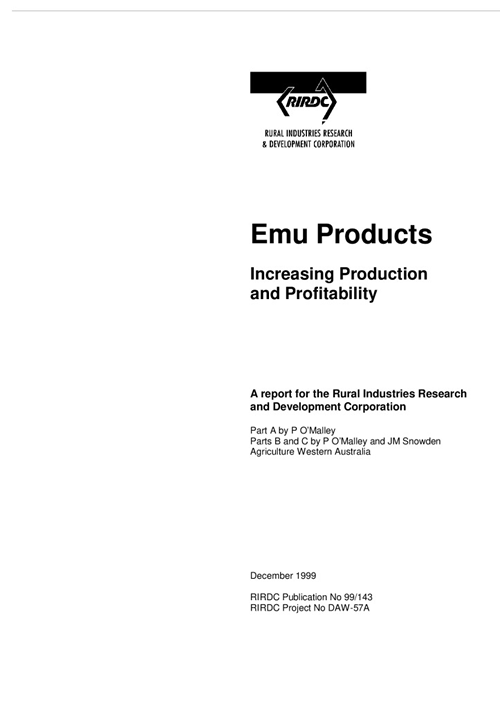The objective of this project was to increase sales and returns from emu oil through
improvements in the quantity and quality of fat produced per bird and to increase sales and
returns from emu skins by reducing skin damage and the introduction of an objective skin
classification system.
Part A of this report documents the impact of season on the growth of emus hatched from July
to November and the effect of feed restriction on seasonal appetite. The data presented will
enable the formulation and costing of production strategies which maximise the production of
emu oil and meat throughout the year.
Part B of this report presents research which investigates the possibility of using alternate
techniques for the de-clawing of emus and describes a refinement of technique which allows a
pad of tissue to develop at the tip of the de-clawed toe. It further documents what effect declawing
emu chicks at hatch has on feed consumption, growth and blood
heterophil/lymphocyte ratio.
Part C of this report presents research into existing emu oil patents, assesses their effect on future
oil research, demonstrates the efficacy of emu oil within existing anti-inflammatory models and
evaluates rat models and other biological and chemical analysis as a means of demonstrating
efficacy within emu oil samples.
The report, a new addition to RIRDC’s diverse range of over 400 research publications, forms
part of our New Animal Products R&D program which aims to facilitate the development of
new industries based on animal or animal products that have commercial potential for
Australia.
Most of our publications are available for viewing, downloading or purchasing online through
our website:
• downloads at www.rirdc.gov.au/reports/Index.htm
• purchases at www.rirdc.gov.au/pub/cat/contents.html
Peter Core
Managing Director
Rural Industries Research and Development Corporation





